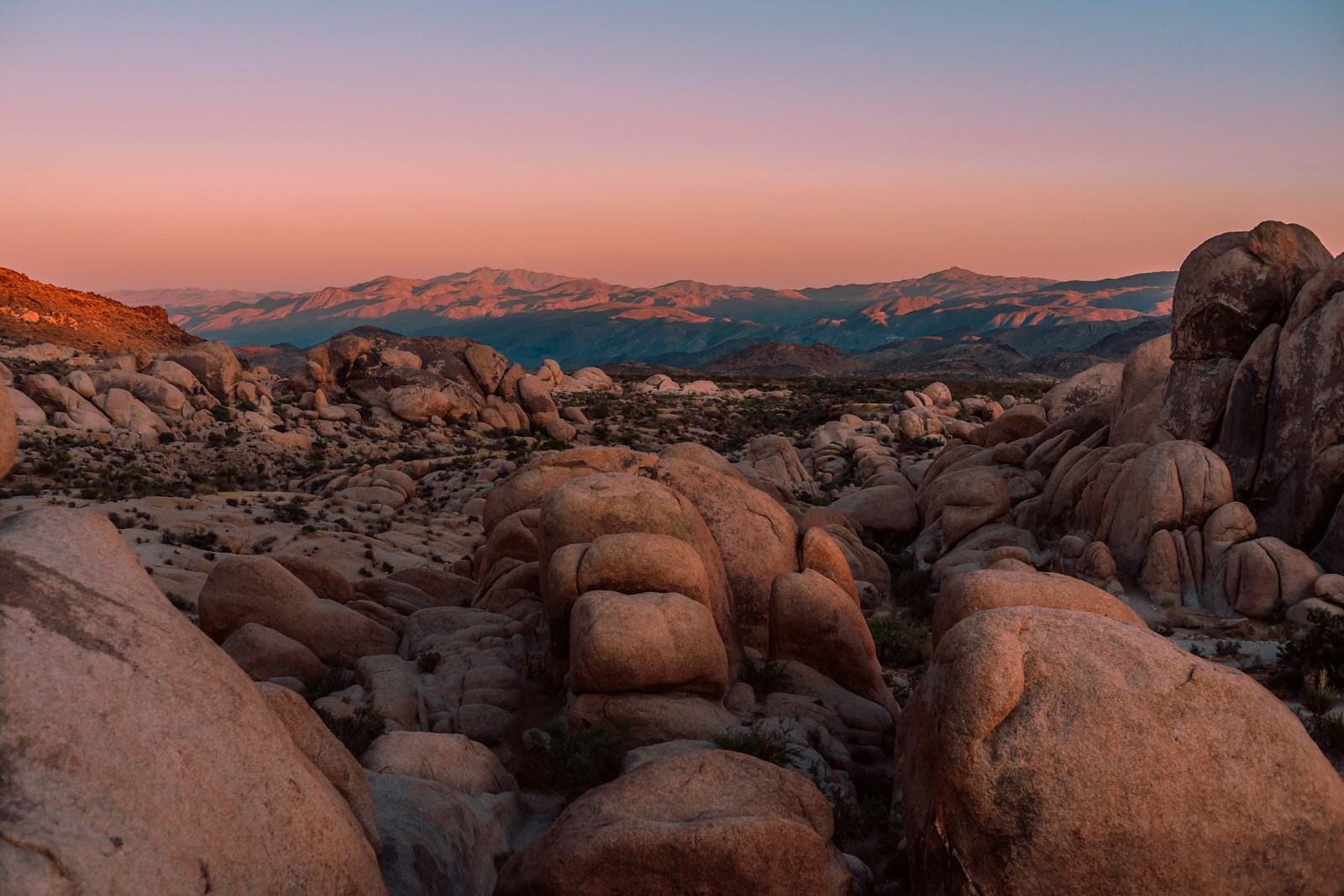Nature’s artistic prowess is on full display in America’s national parks, where millions of years of geological processes have sculpted extraordinary rock formations that captivate visitors from around the world. These stone masterpieces—arches spanning impossible distances, hoodoos reaching skyward like ancient sentinels, and balanced rocks defying gravity—tell the Earth’s story through their layered textures and dramatic silhouettes. For travelers seeking landscapes that inspire awe and wonder, these protected lands offer front-row seats to some of geology’s greatest spectacles. From the rust-colored amphitheaters of the Southwest to the towering coastal formations of the Pacific, each park showcases unique rock features shaped by wind, water, ice, and time. This guide explores the most magnificent national parks for witnessing these geological wonders, places where stone speaks volumes about our planet’s dynamic history.
Arches National Park: Nature’s Sculpture Gallery
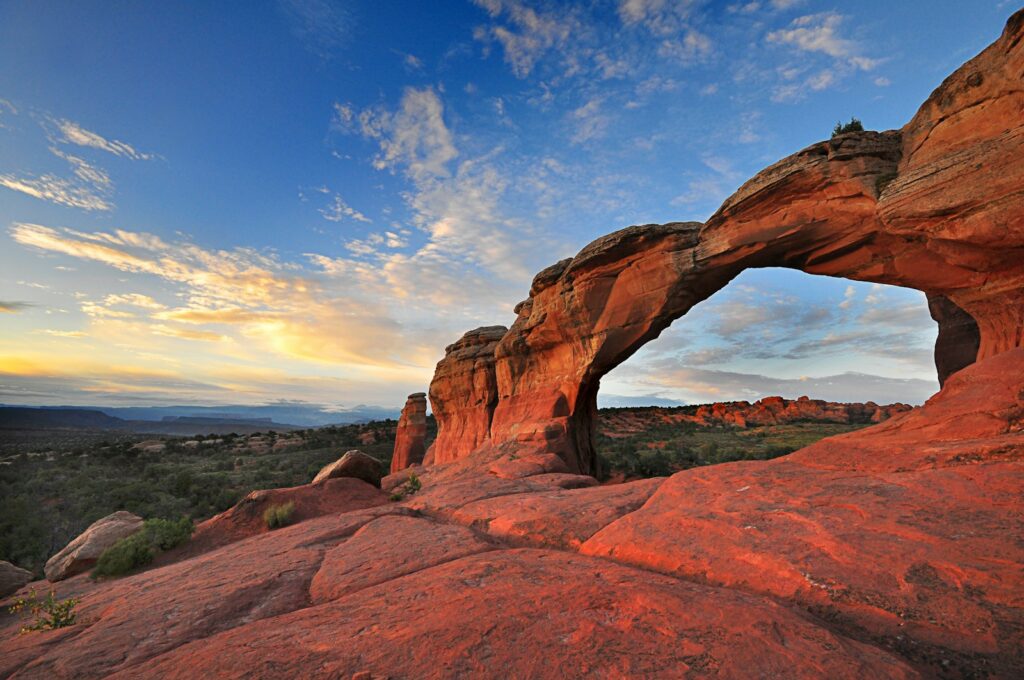
Few landscapes showcase nature’s artistic capabilities quite like Arches National Park in Utah, home to over 2,000 natural stone arches—the highest concentration found anywhere on Earth. Delicate Arch, perhaps the park’s most iconic formation, stands 65 feet tall in seemingly impossible balance, its reddish-orange sandstone glowing brilliantly at sunset against the La Sal Mountains backdrop. The park’s geological wonders formed when salt beds deposited millions of years ago were covered by sandstone, creating pressure that forced the earth upward into domes. Erosion then sculpted these domes into fins, and sections of these fins gradually wore away to create the magnificent arches, balanced rocks, and pinnacles that draw visitors today. Beyond the renowned arches, formations like Balanced Rock, the Fiery Furnace maze, and the towering Park Avenue corridor offer equally mesmerizing examples of sandstone artistry.
Bryce Canyon National Park: Hoodoo Wonderland
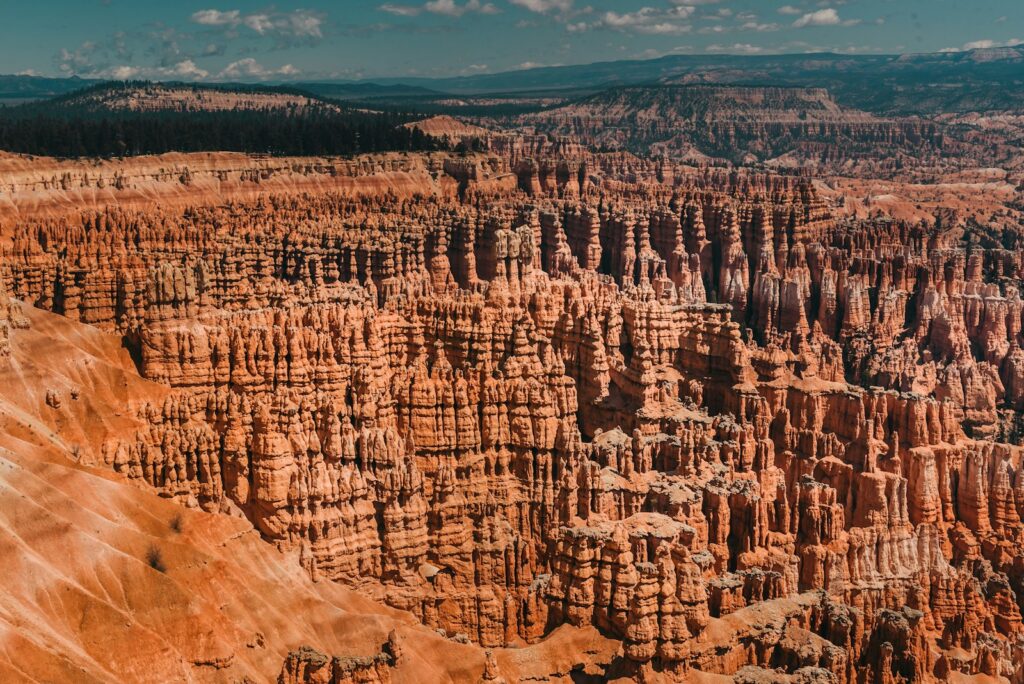
Bryce Canyon National Park defies expectations with its amphitheater of hoodoos—tall, thin spires of rock protruding from arid basins—creating one of the most distinctive landscapes in America’s park system. These geological oddities, formed when ice and rainwater seep into cracks in the rock and expand through freeze-thaw cycles, erode the softer material while leaving harder sections standing. The resulting formations resemble whimsical stone forests in shades of red, orange, and white that appear to change color throughout the day as sunlight shifts across their facades. Thor’s Hammer stands as one of the park’s most photographed hoodoos, its bulky top balancing dramatically atop a narrow pedestal. Hiking trails like Navajo Loop and Queen’s Garden provide intimate encounters with these formations, allowing visitors to walk among stone sentinels that Paiute Indians believed were ancient people turned to stone by an angry coyote god.
Zion National Park: Majestic Sandstone Cliffs
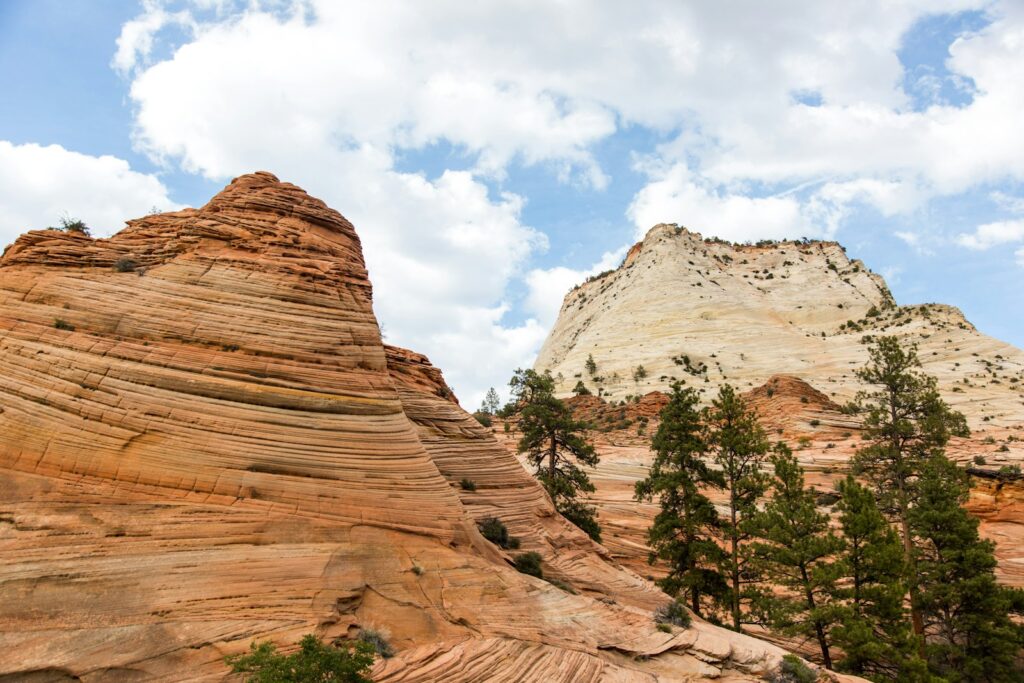
The towering walls of Zion National Park represent one of the most impressive rock formation displays in the national park system, with monolithic cliffs rising 2,000 feet from the canyon floor. The Great White Throne, a massive white Navajo sandstone monolith standing 1,500 feet tall from its base, dominates the skyline as perhaps the park’s most recognizable formation. Zion’s colorful sandstone layers tell a geological story spanning 150 million years, with the distinctive striping patterns revealing ancient environments ranging from coastal plains to windswept deserts. Water plays the primary sculptural role here, carving slot canyons like the famous Narrows, where visitors can wade through the Virgin River between walls that sometimes narrow to just 20 feet apart while soaring hundreds of feet overhead. Checkerboard Mesa demonstrates another fascinating erosion pattern, where both vertical and horizontal cracks create a distinctive grid-like appearance across the mountainside.
Grand Canyon National Park: Earth’s Greatest Chasm
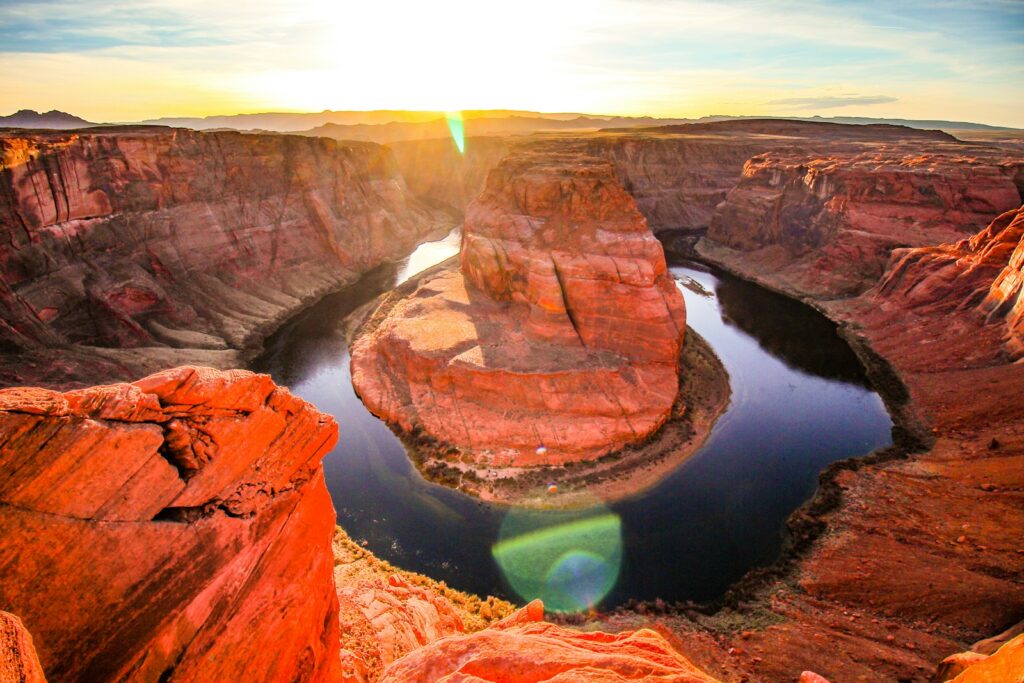
While the sheer immensity of the Grand Canyon often overshadows individual formations, this colossal chasm represents perhaps the most impressive rock display on Earth, exposing nearly two billion years of geological history in its layered walls. The Colorado River has carved a gorge averaging 10 miles wide and one mile deep, revealing a perfect cross-section of rock layers that scientists call “the great unconformity”—a remarkable timeline of Earth’s development visible in bands of different colors and textures. Vishnu Temple, Wotan’s Throne, and Zoroaster Temple stand among dozens of named buttes and temples within the canyon, representing erosional remnants that now form islands of stone rising from the broader landscape. The Kaibab Limestone forming the rim contrasts dramatically with the ancient Vishnu Schist at the canyon bottom, which has been dated to 1.7 billion years old—nearly half the age of Earth itself. Unique perspectives can be gained from Desert View Watchtower on the South Rim, where the meandering course of the Colorado River reveals how water continues to shape this massive formation.
Capitol Reef National Park: The Waterpocket Fold
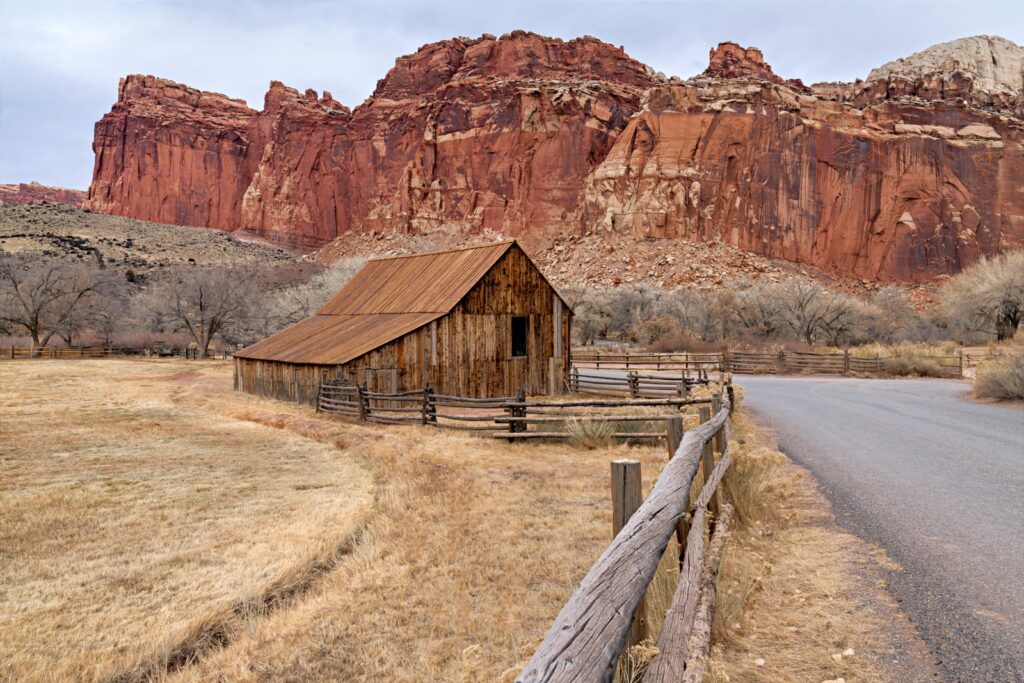
Capitol Reef National Park protects a remarkable geological feature called the Waterpocket Fold, a nearly 100-mile long wrinkle in Earth’s crust that has been described as a “reef” of rock that presented a nearly impassable barrier to early travelers. The park takes its name from white domes of Navajo Sandstone that resemble capitol building domes, combined with the reef-like barrier formed by the monocline—a step-like fold in otherwise horizontal rock layers. Cathedral Valley showcases some of the park’s most dramatic formations, where standalone monoliths like Temple of the Sun and Temple of the Moon rise majestically from the desert floor. Colorful layers in the exposed rock face reveal ancient environments spanning over 200 million years, from shallow seas to swampy floodplains and windswept deserts. Hickman Bridge, a 133-foot natural arch, and the Cassidy Arch named for outlaw Butch Cassidy (who used the area as a hideout) demonstrate the diverse erosional features found throughout this less-visited but equally impressive Utah park.
Canyonlands National Park: Islands in the Sky
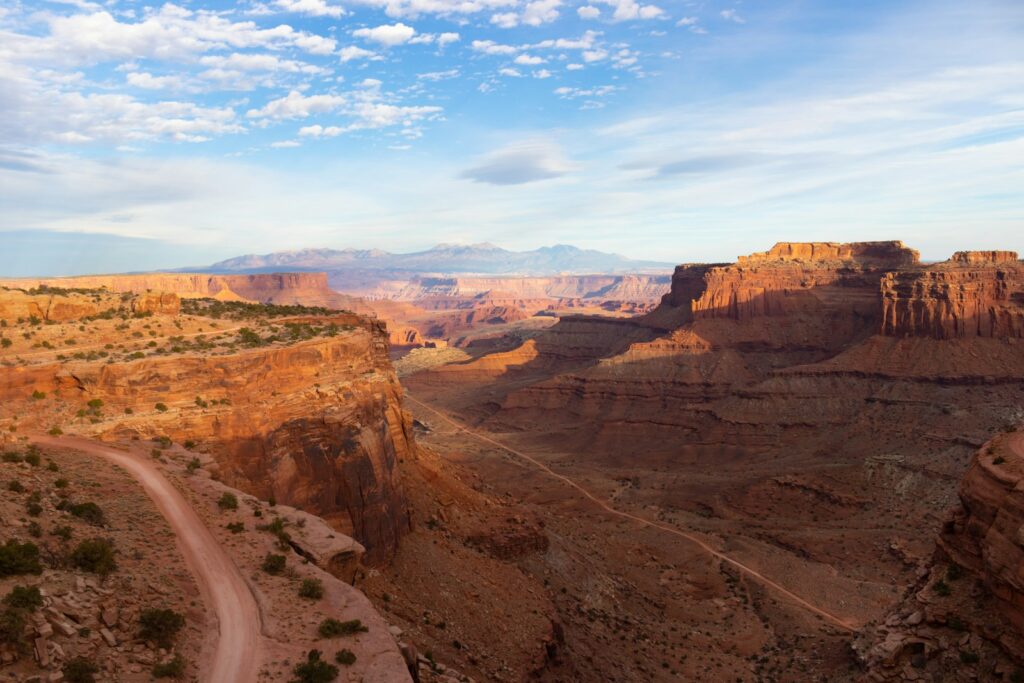
Canyonlands National Park presents a vast landscape divided into four distinct districts by the convergence of the Green and Colorado Rivers, each offering unique perspectives on the region’s dramatic rock formations. The Island in the Sky district sits atop a massive 1,500-foot mesa, offering panoramic views of the surrounding canyons and one of the park’s most famous formations—Mesa Arch, which frames a landscape vista like a natural window. The Needles district features colorful spires of Cedar Mesa Sandstone, banded in red and white, creating stone forests that appear as if molded by some giant’s hands. Perhaps most dramatic is the formation known as Upheaval Dome, a mysterious circular structure that has puzzled geologists for decades—some believe it resulted from a meteorite impact, while others suggest it may be a salt dome where underlying salt pushed upward through the rock layers. The Maze district, considered one of the most remote and challenging areas in the American national park system, contains a labyrinth of twisting canyons and unusual rock formations that have remained largely unspoiled due to their inaccessibility.
Badlands National Park: Eroded Prairies
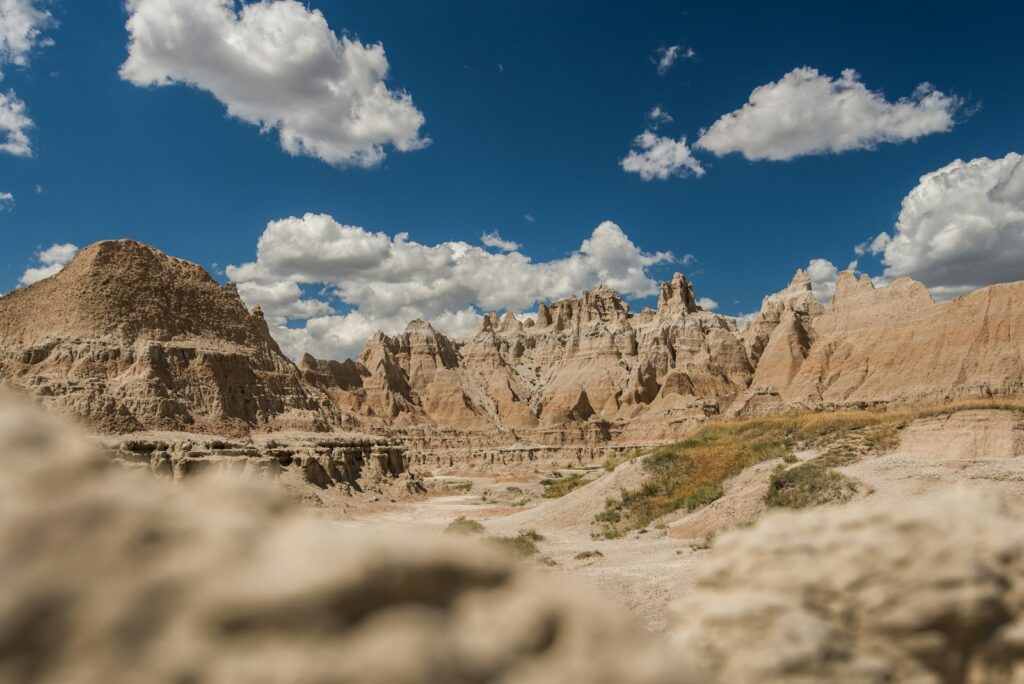
The otherworldly landscape of Badlands National Park in South Dakota offers a stark contrast to the southwestern parks, with eroded buttes, pinnacles, and spires rising from the surrounding prairie grasslands in bands of tan, yellow, gray, and red. These formations emerged from ancient sea beds laid down 75 million years ago, followed by subsequent river deposits that built up sedimentary layers now exposed through erosion. The Badlands continue to erode at a rapid pace—approximately one inch per year—meaning the landscape is constantly changing and will eventually disappear entirely in geologic time. The formations contain one of the world’s richest fossil beds, preserving ancient mammals like saber-toothed cats, three-toed horses, and giant rhinoceros-like creatures that once roamed this area when it was a lush, subtropical forest. The Window Trail leads to a natural frame in the Badlands Wall offering breathtaking views, while the Door Trail guides visitors through a break in this wall to a wilderness of eroded spires that appear almost like the ruins of some ancient, alien civilization.
Carlsbad Caverns National Park: Underground Wonders
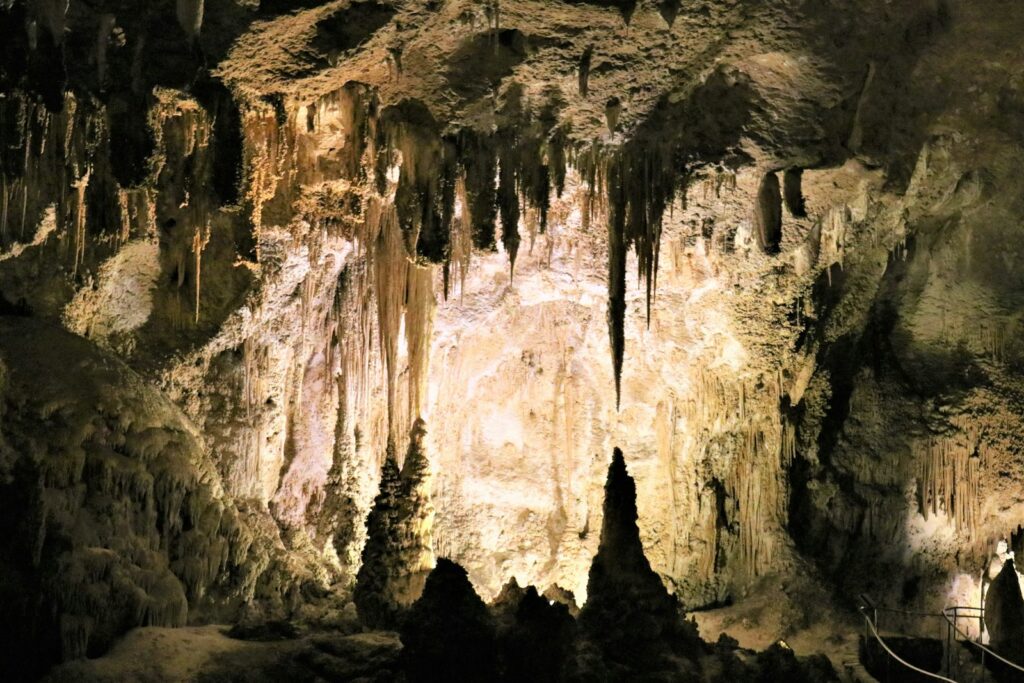
While most exceptional rock formations can be found reaching toward the sky, Carlsbad Caverns National Park showcases nature’s underground sculptural mastery, with more than 119 known caves formed when sulfuric acid dissolved the surrounding limestone. The Big Room, a massive underground chamber large enough to hold 14 football fields, contains some of the most impressive limestone formations in the world, including stalactites, stalagmites, columns, and flowstones created over hundreds of thousands of years as water dripped through the ceiling, depositing calcite one microscopic layer at a time. The Hall of Giants contains massive columns where stalactites and stalagmites have joined together, while delicate “soda straw” formations—hollow limestone tubes—hang from the ceiling like fragile mineral icicles, some extending more than 20 feet in length. The remarkable “Witch’s Finger” formation demonstrates the bizarre shapes that can develop underground, resembling a gnarled appendage pointing upward from the cave floor. These subterranean rock formations offer a unique perspective on geological processes that occur hidden from the sun, creating a mysterious world equally as impressive as the exposed landscapes found in other national parks.
Joshua Tree National Park: Granite Jumbles
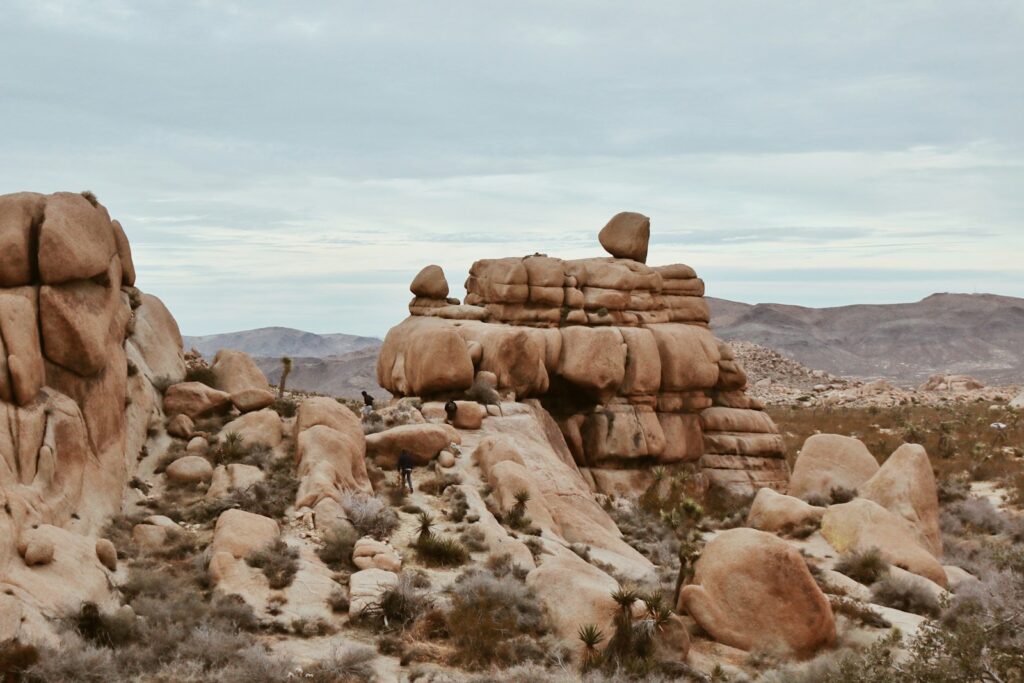
Joshua Tree National Park’s distinctive rock formations result from a completely different geological process than many Southwest parks, consisting primarily of monzogranite that cooled slowly beneath the Earth’s surface between 100 and 175 million years ago. As groundwater seeped into the granite, it gradually weathered the rectangular joints in the rock, rounding the edges and creating the massive boulder piles and balanced rocks that characterize the park today. Skull Rock, with depressions resembling eye sockets, demonstrates how small depressions can be enlarged by further erosion when water collects in them after rainstorms. The Wonderland of Rocks encompasses a 12-square-mile labyrinth of granite formations creating a maze-like landscape beloved by climbers and photographers alike. Arch Rock, a granite arch spanning approximately 30 feet, shows how erosion can create similar features in different rock types—though the process that created this arch differs significantly from those in sandstone environments like Arches National Park. These geological features, combined with the otherworldly Joshua trees for which the park is named, create a landscape that appears almost extraterrestrial in its strange beauty.
Petrified Forest National Park: Ancient Trees Turned to Stone

Petrified Forest National Park presents one of the world’s largest and most colorful collections of petrified wood, where ancient trees have transformed into stone through the miraculous process of permineralization. These 225-million-year-old fossilized logs originated during the Late Triassic period when the region was a tropical forest near the equator, filled with towering conifers reaching heights of over 200 feet. When these trees fell and were buried in sediment rich in volcanic ash, groundwater carrying dissolved minerals seeped through, gradually replacing the organic material with silica crystals while maintaining the original cellular structure of the wood. The mineralization process often incorporated iron, carbon, manganese, and other elements, resulting in logs displaying brilliant hues of red, yellow, blue, purple, and black. Beyond the petrified wood, the park’s Painted Desert showcases badland formations in rainbow hues, while Blue Mesa presents an otherworldly landscape of blue-tinted clay formations eroded into conical hills striped with contrasting colors. Ancient petroglyphs found throughout the park add human history to these geological wonders, connecting prehistoric peoples to these remarkable stone trees they once considered sacred.
Yosemite National Park: Granite Monuments
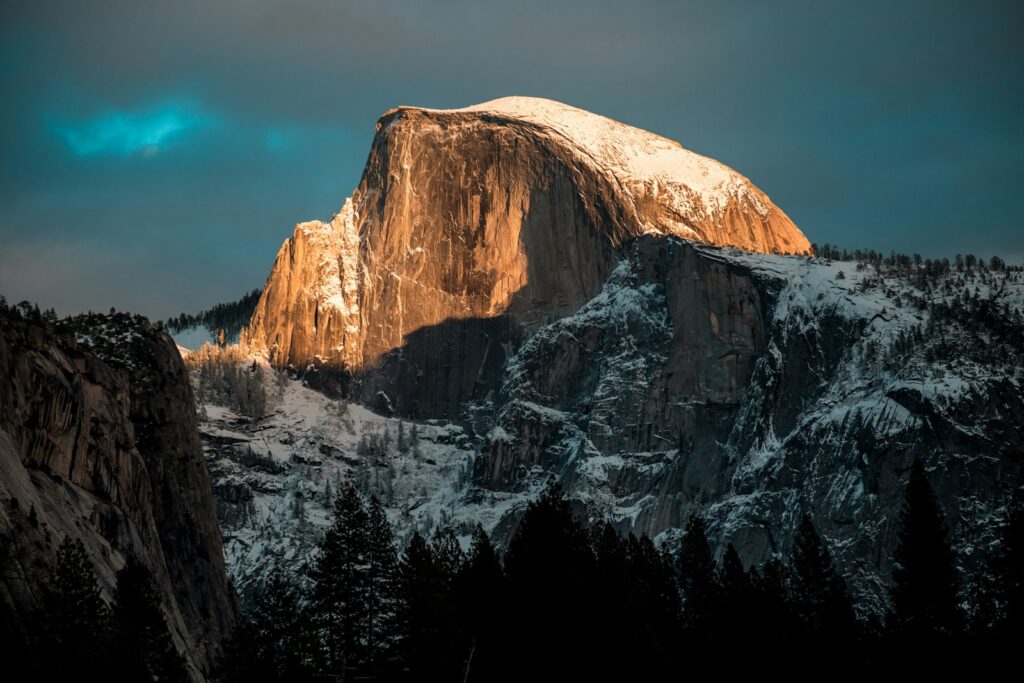
Yosemite National Park’s iconic skyline features some of the most recognizable rock formations in America, dominated by massive granite monoliths shaped by glacial activity. Half Dome rises nearly 5,000 feet from the valley floor, its distinctive shape resulting from both glacial action and exfoliation—a process where outer rock layers peel away like onion skins due to pressure release as overlying rock eroded away. El Capitan, the largest exposed granite monolith in the world, presents a sheer vertical face rising 3,000 feet from base to summit, challenging the world’s best climbers and serving as a testament to the incredible uplift of Sierra Nevada granite. The park’s many waterfalls, including 2,425-foot Yosemite Falls, continue to shape the valley walls through erosion, while features like the Royal Arches demonstrate exfoliation’s ability to create geometric patterns across vast rock faces. Glacier Point offers views of these formations from above, providing perspective on how ice more than a mile thick once filled this valley, carving the U-shaped profile that characterizes this cathedral of stone.
Olympic National Park: Sea Stacks and Coastal Formations
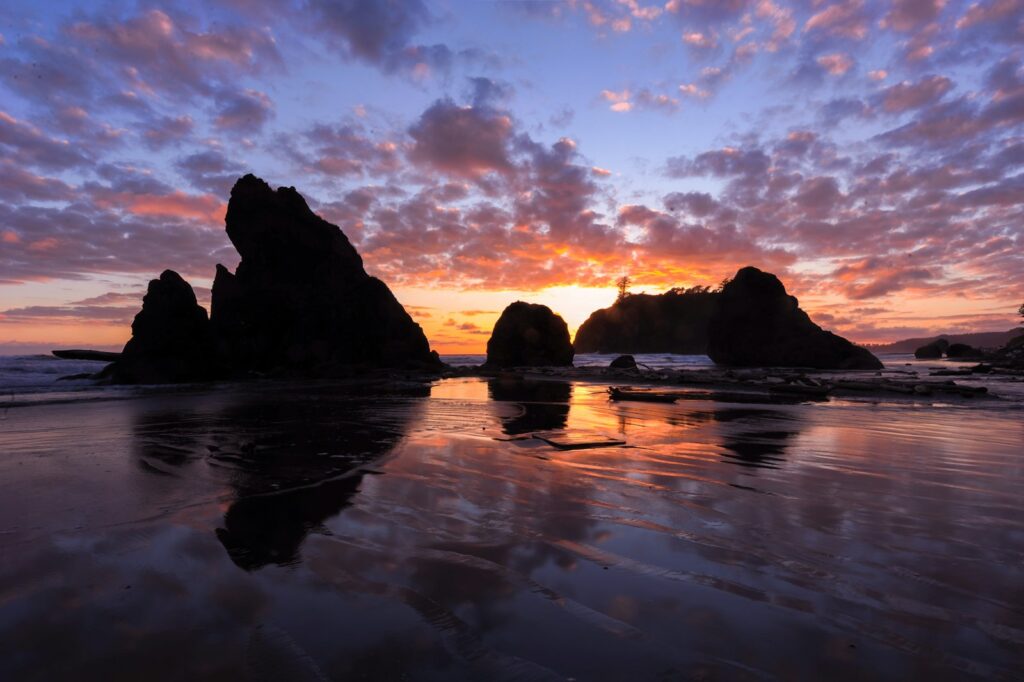
Olympic National Park offers a different dimension to rock formation appreciation with its dramatic coastal features, where erosion-resistant sea stacks rise majestically from the Pacific Ocean along the park’s 73-mile wilderness coastline. These towering offshore monoliths once formed part of the mainland but have been separated through millennia of powerful wave action eroding the softer surrounding rock. Formations like Split Rock demonstrate how wave action can create natural arches that eventually collapse, leaving isolated islands of rock standing defiantly against the relentless ocean. Ruby Beach showcases some of the most photographed sea stacks, where sunset light transforms these silhouettes into dramatic sentinels emerging from crashing surf. The tide pools that form around these formations create microhabitats for fascinating marine creatures, adding biological interest to the geological spectacle. These coastal formations continue to evolve before our eyes, offering visitors the chance to witness active geological processes reshaping the coastline with each powerful storm that hits the Olympic Peninsula.
Conclusion
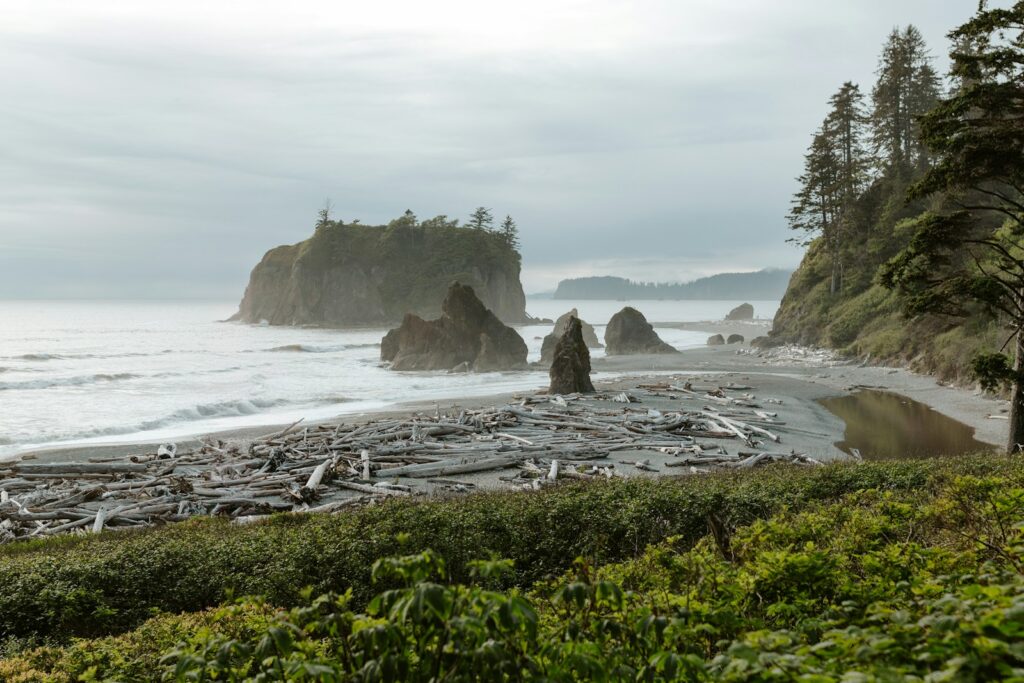
America’s national parks offer an unparalleled opportunity to witness Earth’s geological history written in stone, from towering monoliths to delicate arches, from rainbow-hued badlands to subterranean crystal palaces. These rock formations reveal the powerful forces that have shaped our planet—compression creating mountains, water carving canyons, wind polishing surfaces, and time allowing for the miracle of transformation. Each park tells a different chapter of Earth’s story through its unique geological features, inviting visitors to connect with time scales far beyond human experience. Whether you’re standing before the impossible balancing acts at Arches, gazing into the ancient abyss of the Grand Canyon, or watching waves crash against Olympic’s sea stacks, these stone wonders remind us of nature’s patient artistry and the dynamic processes that continue to shape our world. The preservation of these geological treasures within the national park system ensures that future generations can experience the same sense of wonder and appreciation for Earth’s remarkable stone architecture.

